Today, Green Bay Botanical Garden spans 47 acres full of natural Wisconsin scenes and features more than 60,000 breathtaking plants and flowers.
25 years ago, it was an undeveloped area with limitless potential. Nearly 25 years before that, it was an idea in the minds of a few passionate plant people. Here’s how almost 50 years of hard work, determination and a special partnership got us to where we are today…
Gathering Garden Enthusiasts
The idea for a community garden took root early on with help from Green Bay Press–Gazette journalist, Ray Pagel, and Brown County Extension agent, Ernie Ehrbar. They formed the Gardeners Club of Green Bay (part of the national Men’s Garden Clubs of America), which promoted interest in horticulture, home landscaping and community gardening. This group regularly talked about the need for a public arboretum or botanical garden to boost Green Bay’s already culturally rich reputation.
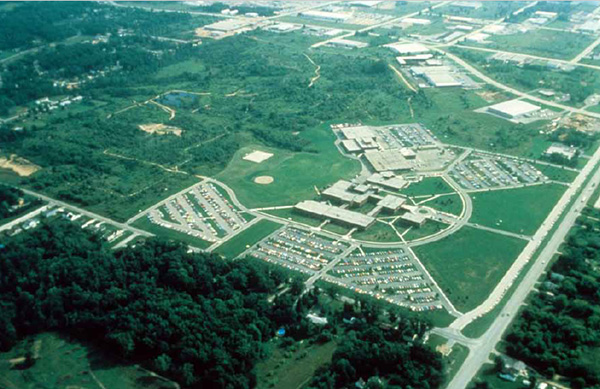
Out of this club, Robert (Bob) Mongin, Green Bay’s first landscape architect, and Paul Hartman, a Brown County Extension Horticultural Agent, joined in on the dream of a botanical garden. Hartman worked with Tim Lang (city forester) to create a subcommittee from the club, Plants in the Urban Environment (PUE), to further explore the concept. The committee also included several people and founders who would be crucial to the creation of the Garden: Jerry Landwehr (first Horticulture Director), Glenn Spevacek (first Executive Director), Lee Hansen, Gail Fischer, Jim Beard, Roger Murphy, Dave Parsons and Sister Nivard Schaefer.
These committee members devoted much of their free time during the summer of 1978 to research the process of creating a botanical garden, including visiting other locations in Wisconsin and beyond to get more in–depth behind–the–scenes knowledge.
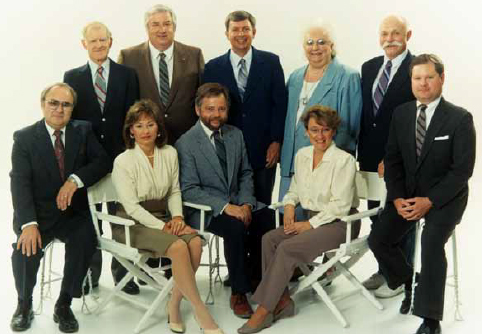
Standing left to right: Bob Mongin, Jerry Krueger, Lee Hansen, Marilyn Crawford and Lawrence Krause.
Their next step? Finding a spot that would give a botanical garden room to grow.
Finding the Soil
After visiting more than 30 potential sites in the greater Green Bay area, three options presented themselves, but there was only one location that would work best for a botanical garden:
A portion of land owned by Northeast Wisconsin Technical Institute (NWTI) (now known as Northeast Wisconsin Technical College).
“We fell in love with the site when we saw it, because of the rolling hills, the old apple trees and its character,” Landwehr said.
The 90–acre area was part of the original 191 acres the college bought in 1969, which included the entirety of the old Larsen Orchard.
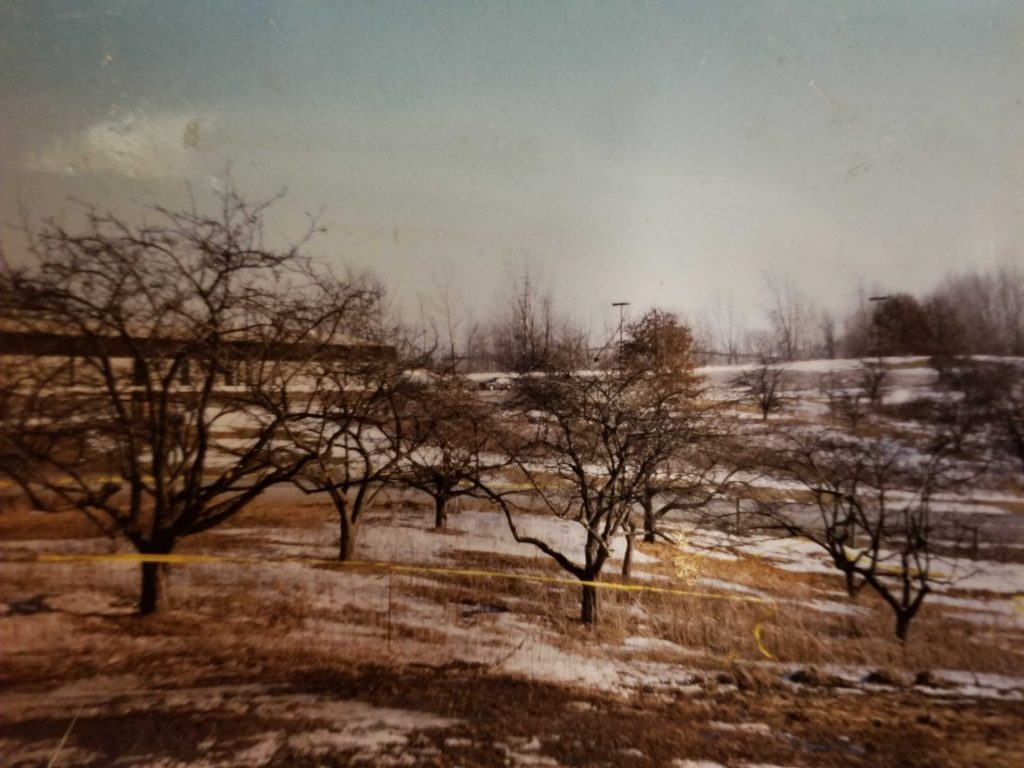
It seemed as if everything was falling into place. With support from NWTI Dean Allen Ellingson, NWTI President Gerald Prindiville and Associate Dean of Agriculture Don Jaworski, the PUE group, now known as the Botanical Garden subcommittee, presented to the NWTI Board of Trustees in early 1980.
They showcased the benefits of a botanical garden for the college, the Green Bay community and beyond and why hiring Francis Devos of the Minnesota Landscape Arboretum and Geoffrey Rausch of EPD Consultants (designer of Chicago Botanic Garden) would be the right move.
The board didn’t agree and tabled any decisions on the proposal, citing apprehension in letting outside groups develop the Garden.
Planting the Seed for Partnership
“We had a plan and some ideas, but the group was not ready. We had no memberships, no official status and no community backing,” said Hartman.
While the subcommittee continued to meet, it would be a few years until they revisited their project. In 1982, Spevacek came back to the group with a plan to renew their passion in building a botanical garden for the community. With his leadership, the group incorporated into Green Bay Botanical Garden, Inc. and eventually obtained nonprofit status in 1984.
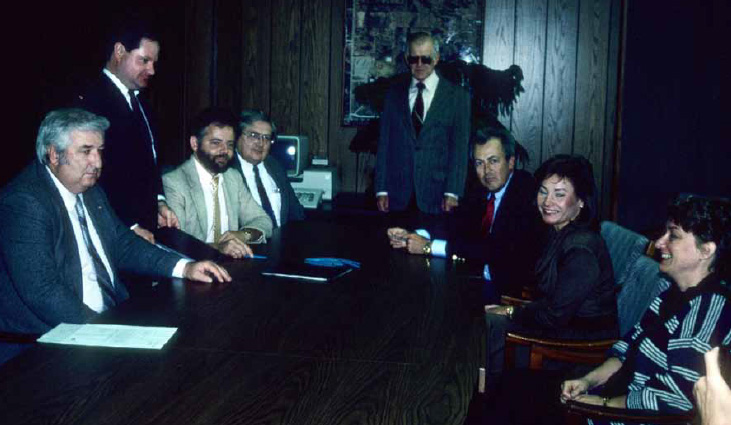
They also formed their first board with Spevacek, Hartman and David Parsons as officers, accompanied by directors: Mongin, Hansen, Lawrence Krause, Lynn Kirkpatrick, Mike Hassler, Teri Wall, Polly O’Brien, Nan Schmechel and Gene Eisch. Hartman reconvened their group to review all the potential sites for a garden and in May 1986, the Garden’s Board agreed that the 90–acre NWTI site was still the ideal choice.
This time, it did fall into place. The college’s Board approved a lease agreement for 60 acres at one dollar a year but still had one caveat: NWTC would only renew the lease if the development plan was successfully funded. The Garden’s Board thought a long–term lease was needed to ensure a permanent home for the Garden.
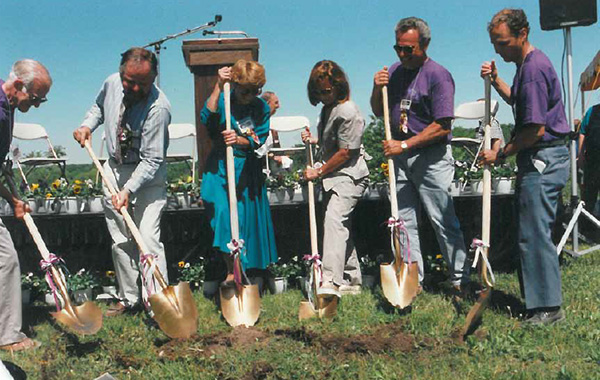
Over the next four years, negotiations continued. Thanks to support of NWTC President Prindiville and faculty members like Jaworski, the college officially agreed to a 99–year lease for 30 of the 60 acres in May 1992 once the Garden raised $1.4 million in its capital campaign.
In 2000, the lease was updated giving the Garden a total of 47 acres with the remaining 13 to be kept by the college for its landscape horticulture program.
Seeing the Seed Sprout & Grow
Since the Garden opened in 1996, the partnership with NWTC has only flourished.
In 2000, NWTC created a Landscape Horticulture Program, which was originally a two–year certificate program that became a fully accredited Associate program. Today, students interested in Horticulture can enroll in programs related to the green industry including Landscape Installation, Landscape Technician, Sustainable Agriculture or Plant Healthcare Management.
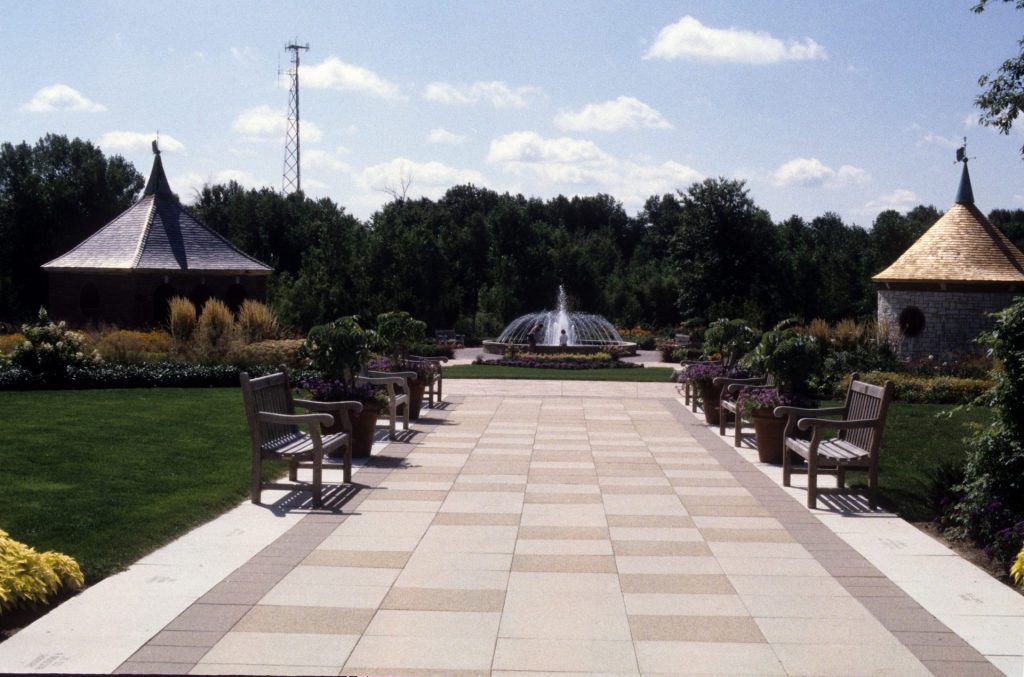
Students in these programs can also use the Garden as a resource for their studies, including courses taken in the Landscape Horticulture Learning Center (built in 2006) and hands–on experience in the greenhouses they share with our Horticulture Team or skill–building with our Garden Team through a variety of intern roles throughout the year.
“The center gives our students and staff the unique opportunity for hands–on learning on a 47–acre ornamental lab with display gardens and natural areas” says Amy Kox, Dean of Trades & Engineering Technologies at NWTC.
The college’s Landscape Technician Technical Diploma is the only Wisconsin program hosted by an accredited institution that’s located on a botanical garden site.
“This partnership allows our students to experience hundreds of different types of plants and landscaping techniques,” she says. “We are so grateful to be able to have the Garden for our students and staff to learn and enjoy.”
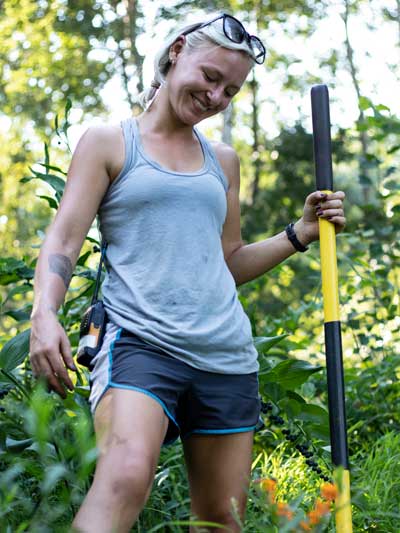
Current Executive Director, Susan Garot, emphasizes the importance of this partnership for the community’s benefit.
“Looking back on our history, it’s clear we’re still here in no small part due to our willing partner, Northeast Wisconsin Technical College,” she says. “The last 25 years have shown that we can do a lot of good together, whether it’s for the community at large, the college students who build skills from first–hand field experience or simply connecting people with plants all year long.”
Historical details and quotes from “A Place for Everyone: The History of Green Bay Botanical Garden” (Lee Somerville) have been referenced in this article. To learn more about the Garden’s rich history, check out our timeline of events or visit the WPS Trellis Gift Shop to purchase a copy of our history book.
This article originally appeared in our May-August 2021 Newsletter.





